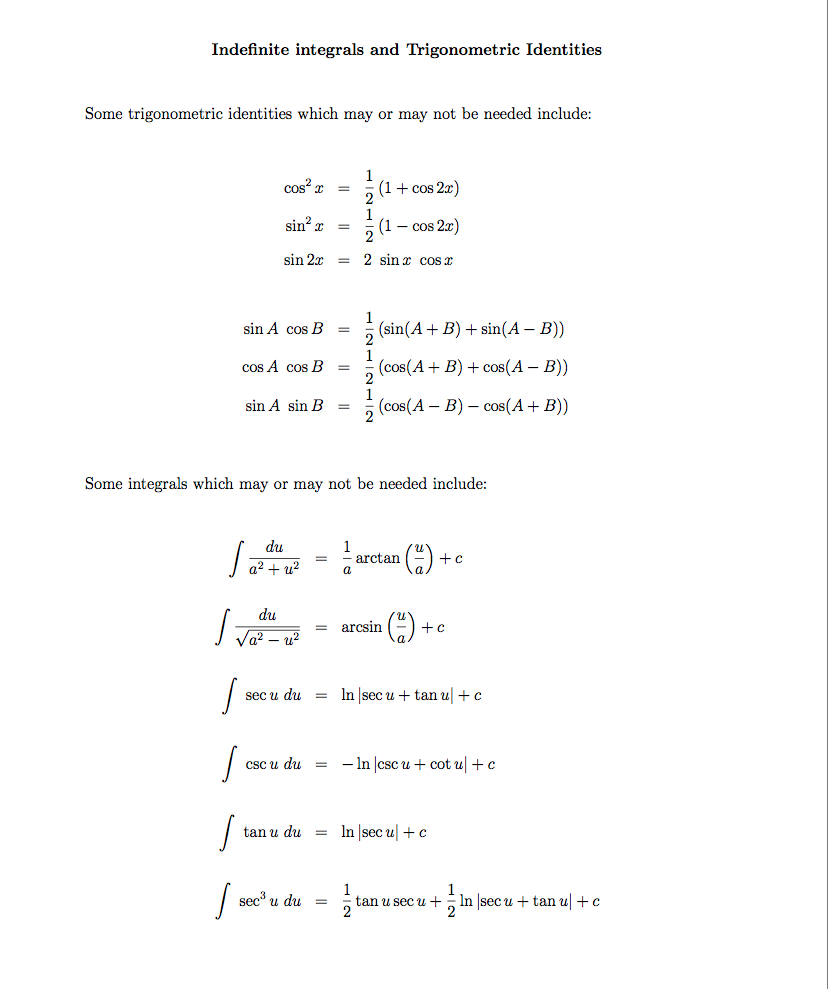Wednesday, May 1: 2:00-3:50pm
|
Summary Points:
|
| |
The exam will cover Chapter 11 and Methods of integration.
There will be no series/sequence problems (ch 10)
There will be no application problems (ch 6, 7.8,8.1,8.2)
There will be no improper integrals. |
| |
- About 50% will be on Chapter 11 material (11.1-11.4). You should be able to:
- Compute arclength in parametric and polar coordinates
- Compute areas in polar coordinates.
- Compute speed and slopes for parametrically described curves
- Convert between cartesian, polar and parametric curves. There are several HW problems
of this nature and a sample is here.
- The first 40% will be straight up integral problems (4 integral questions):
- substitution
- integration by parts
- simple trigonometric integrals
- inverse trig. substitutions
- simple partial fraction expansions
The problems will be similar to those on the review sheet. The formula sheet below will be attached to the exam and contains trig. identities needed for certain
kinds of integrals.
- There will be one simple Fourier Series question worth between 10%-15%. All that will
be required of you is to be able to compute the Fourier coefficients of a simple function
defined only on [-pi,pi]. Therefore you will need to know the following three formulae:

- A few additional points
- Much of the Chapter 11 material also requires integration. Related arclength and area
problems, in particular, require integration using algebra tricks (complete the square,
factoring, trig identities, recognizing a perfect square), inverse trig substitution
and trigonometric integrals. It is important you solidly review such methods.
- The exam may seem a little trig-heavy in part because of polar coordinates and related
polar integrals. You should quickly review both the derivatives and integrals of sin(x),
cos(x), tan(x), sec(x). Integrals of the latter two will be on the formula sheet.
- You may be required to plot simple polar curves especially as they pertain to polar
integrals.
- For inverse trig substitution integration you must, when possible, convert your answer
back to "x" without using arccos, arcsin, etc. To be clear, look at this example here.
- You are required to know sine and cosine of 0,Pi/6,Pi/3,Pi/4,Pi/2
- If you are well prepared, you should be able to do the exam in 50min but will have
1hr and 50min.
|
Formula Sheet that will be attached to Final
Click on the image to view the PDF.

TETT - Technology Enhanced Traditional Teaching: Updated on: 12/23/2014.


